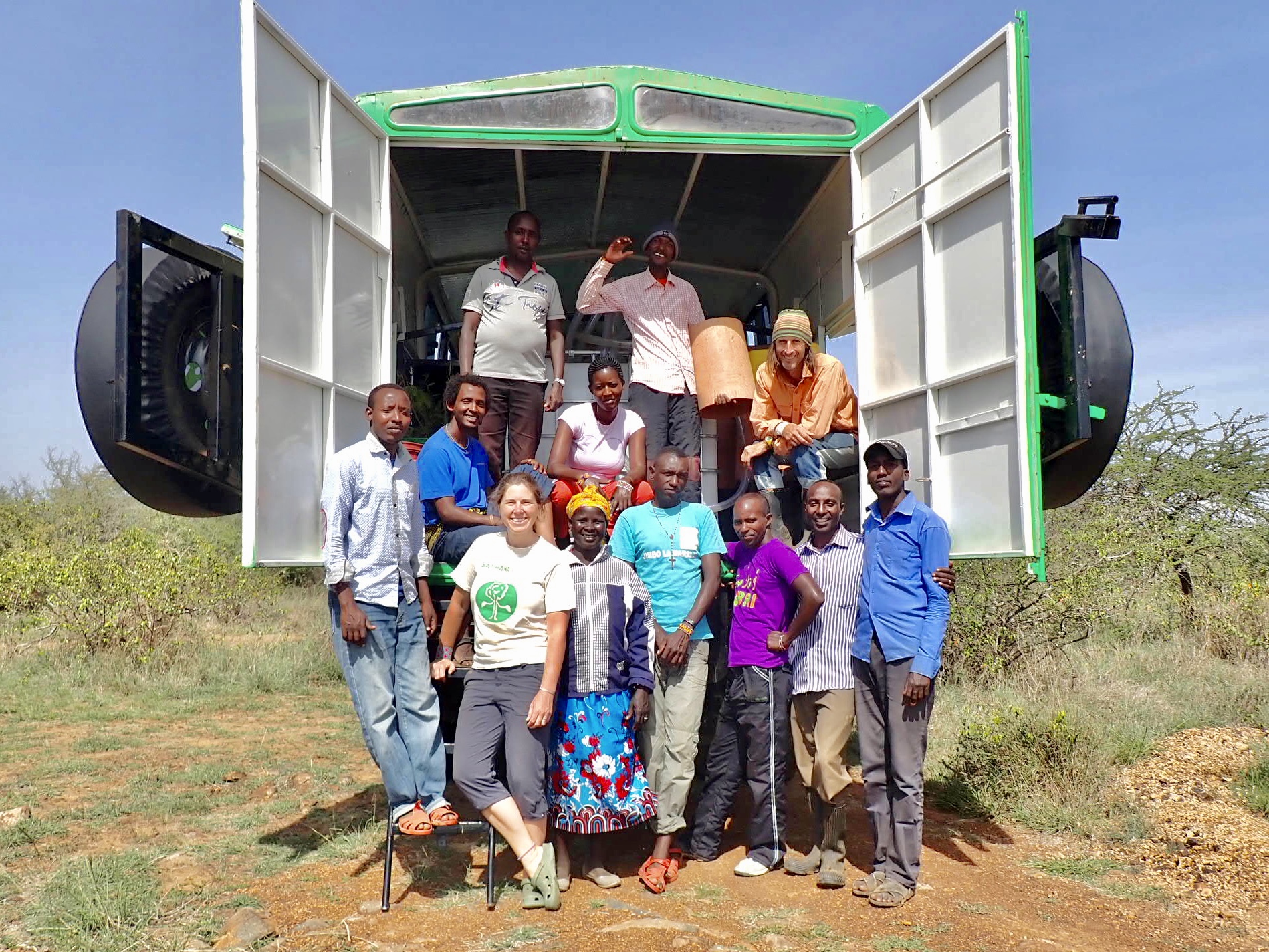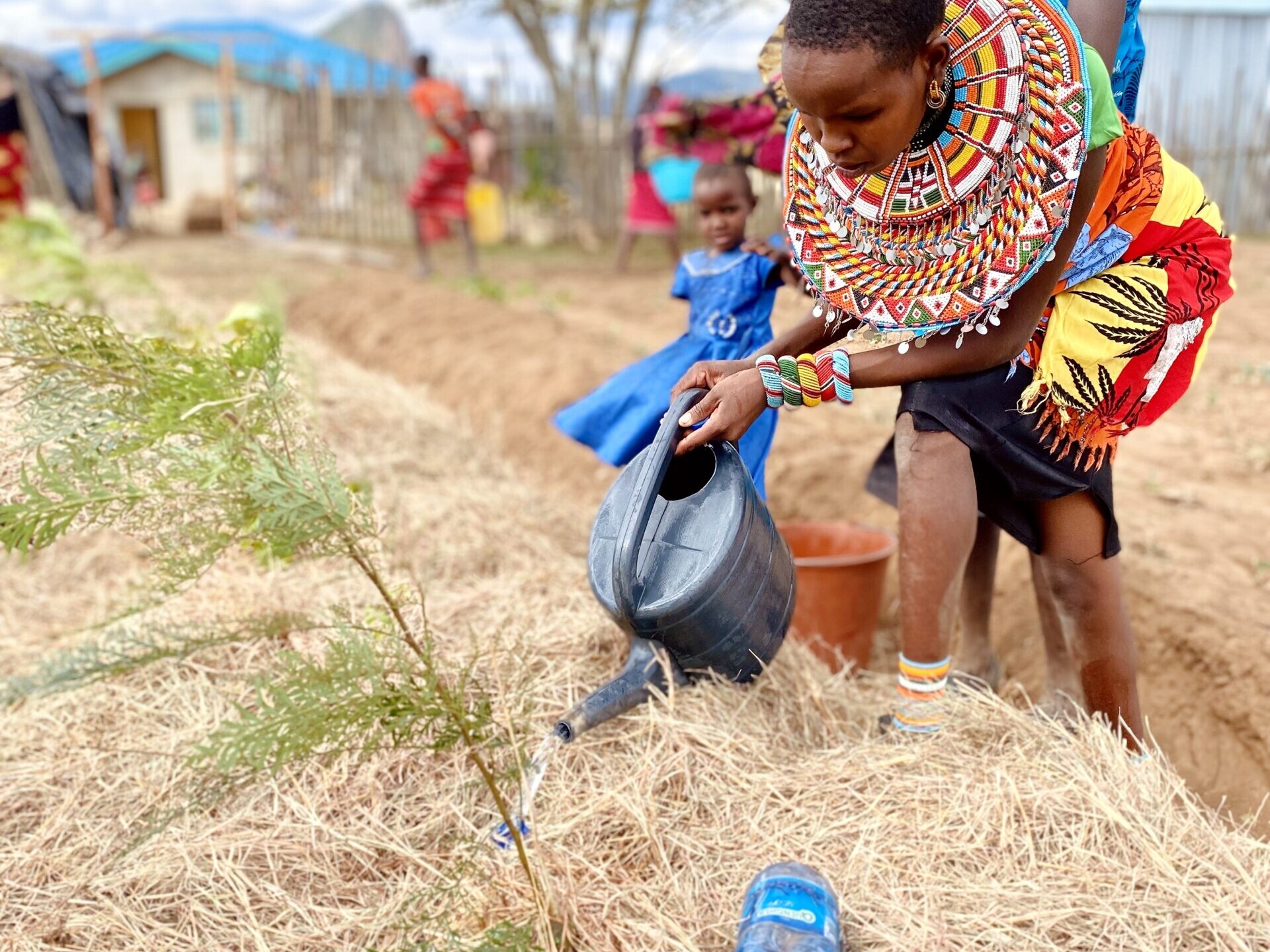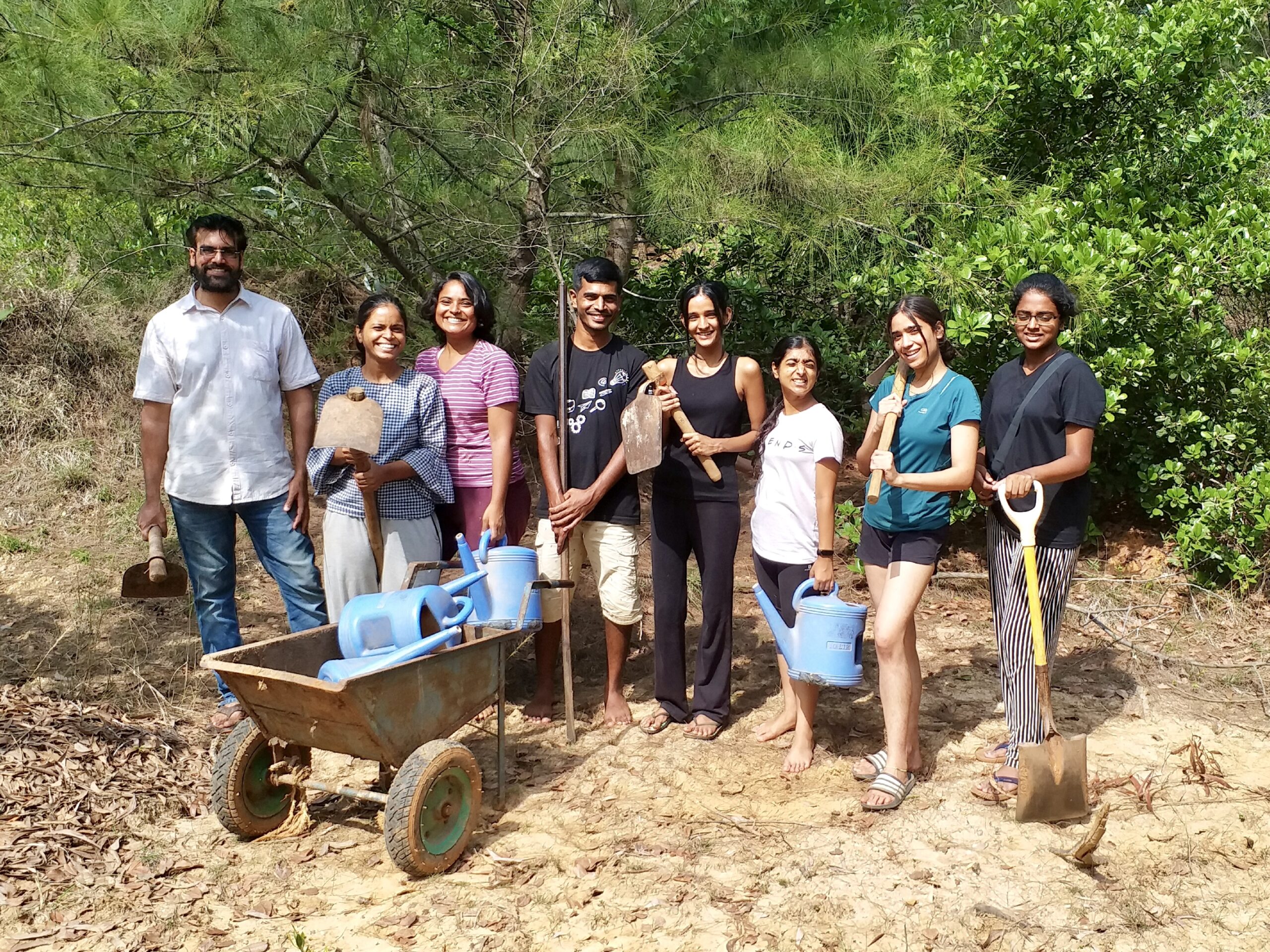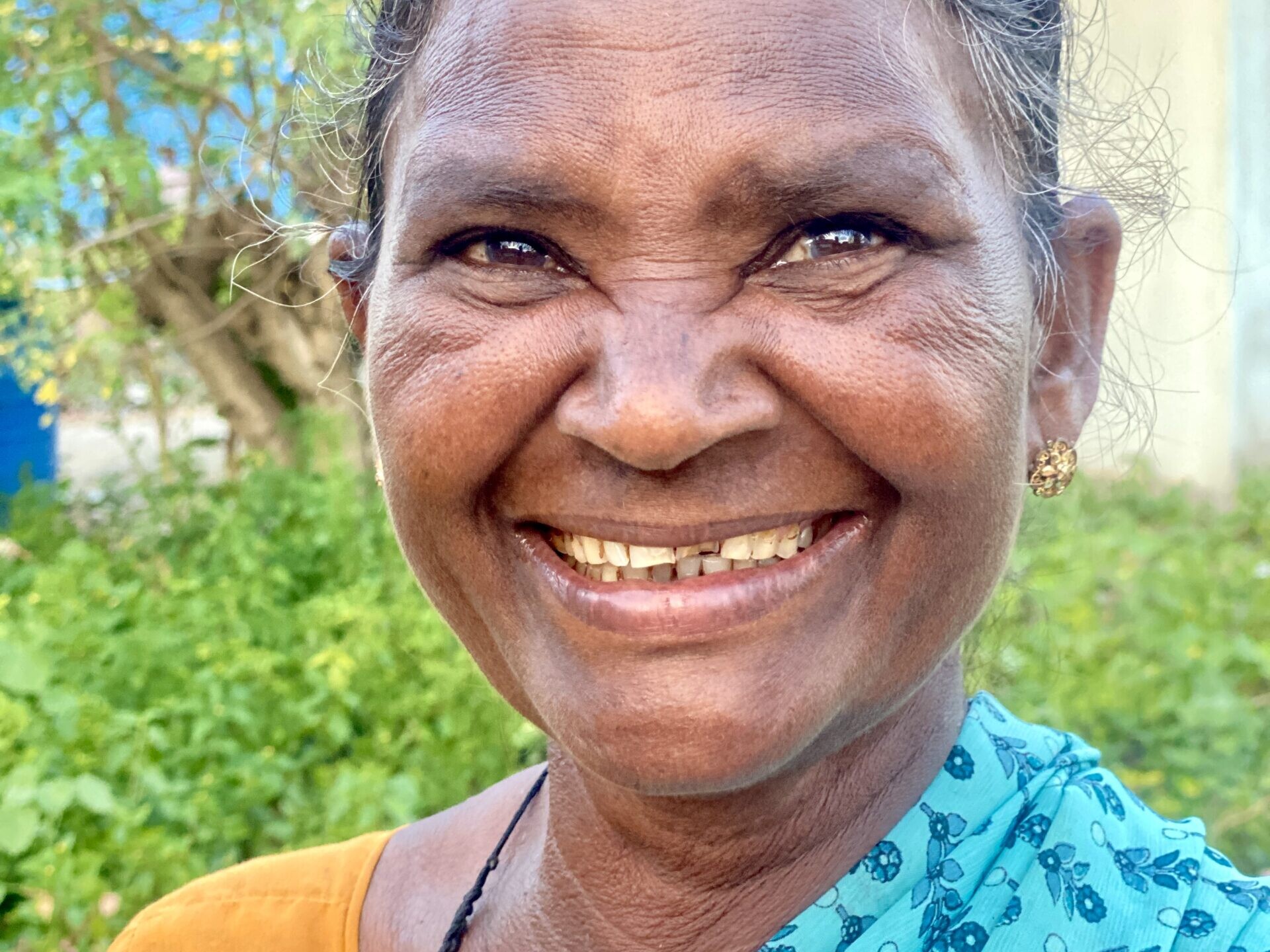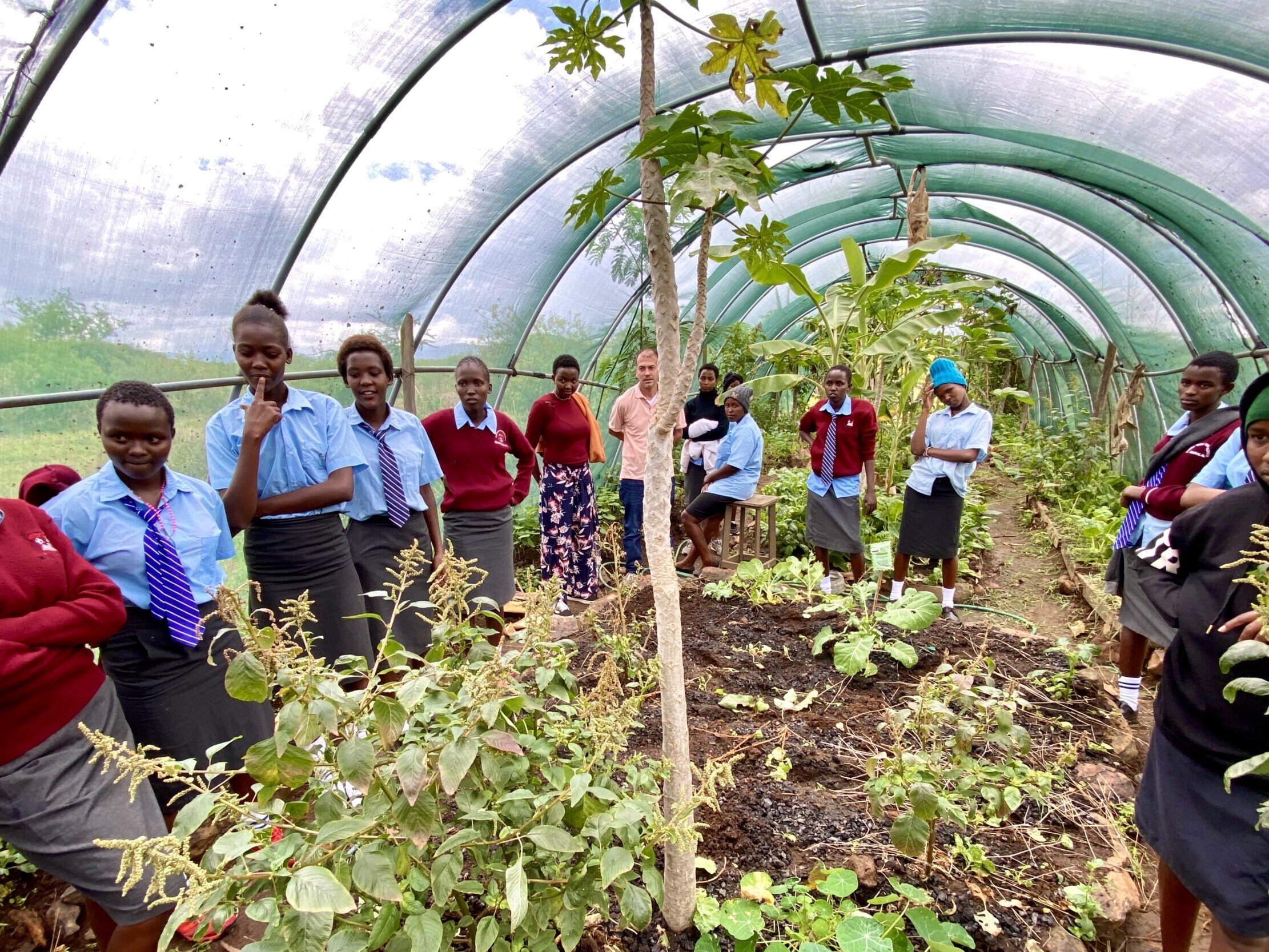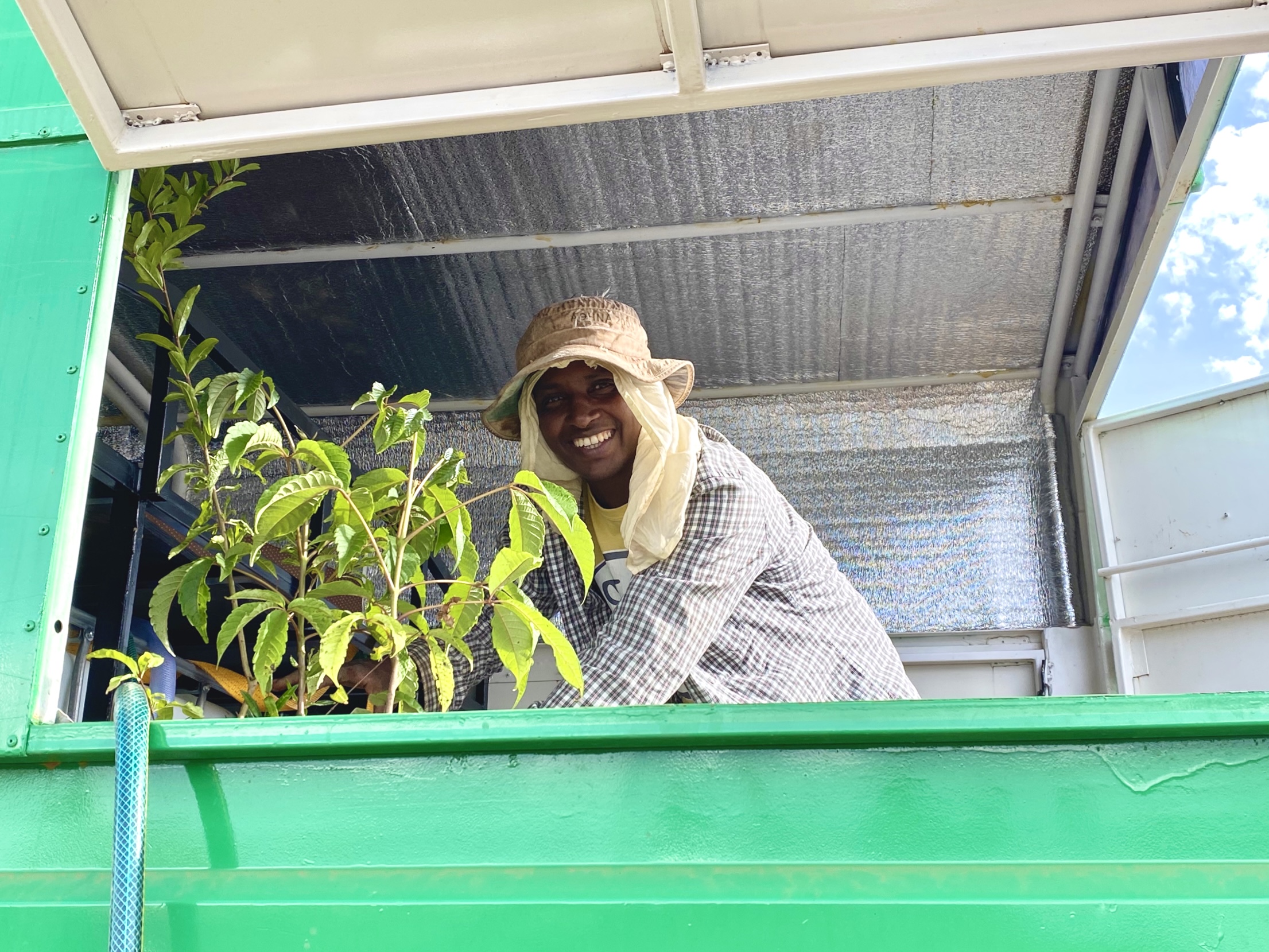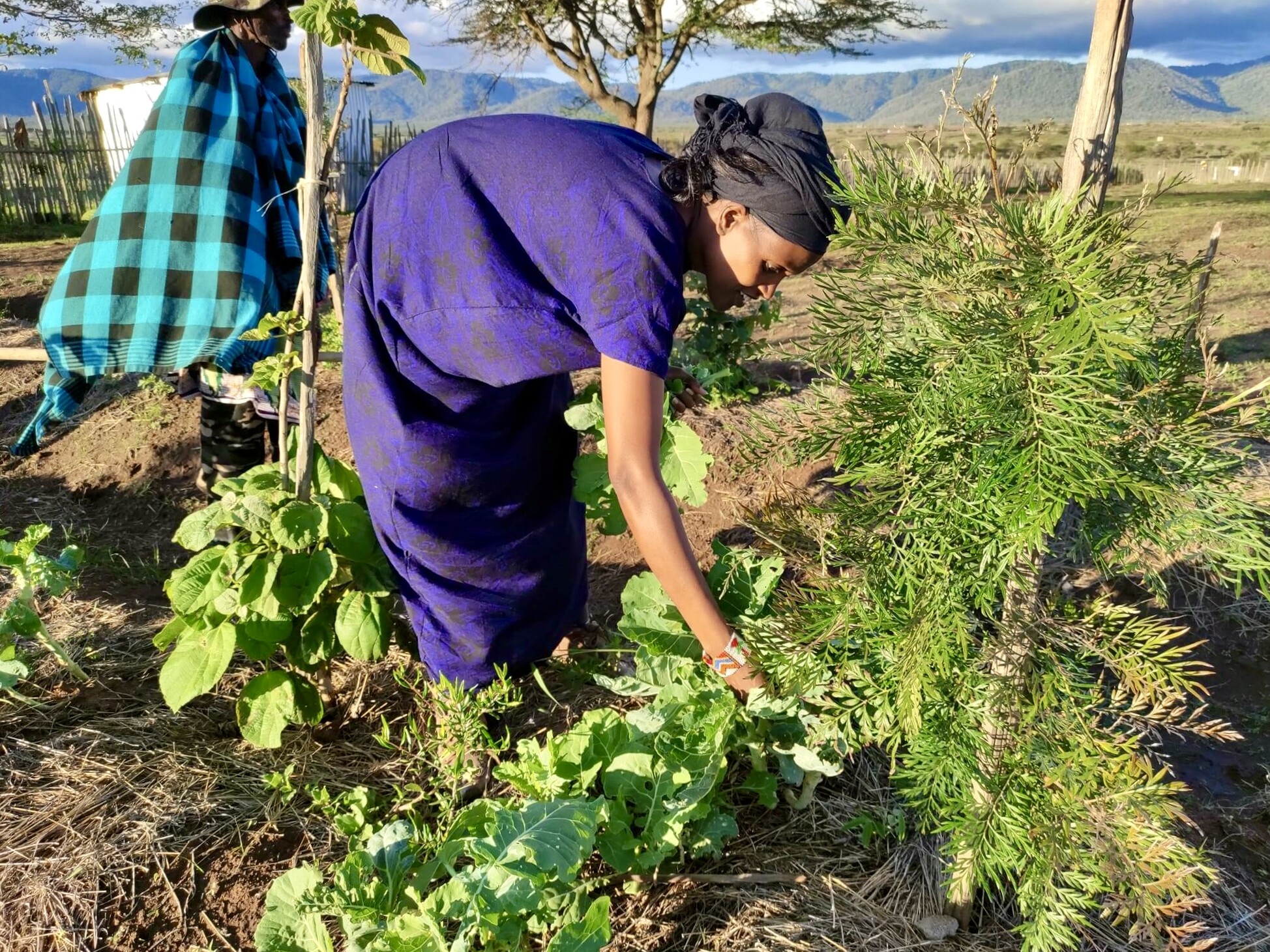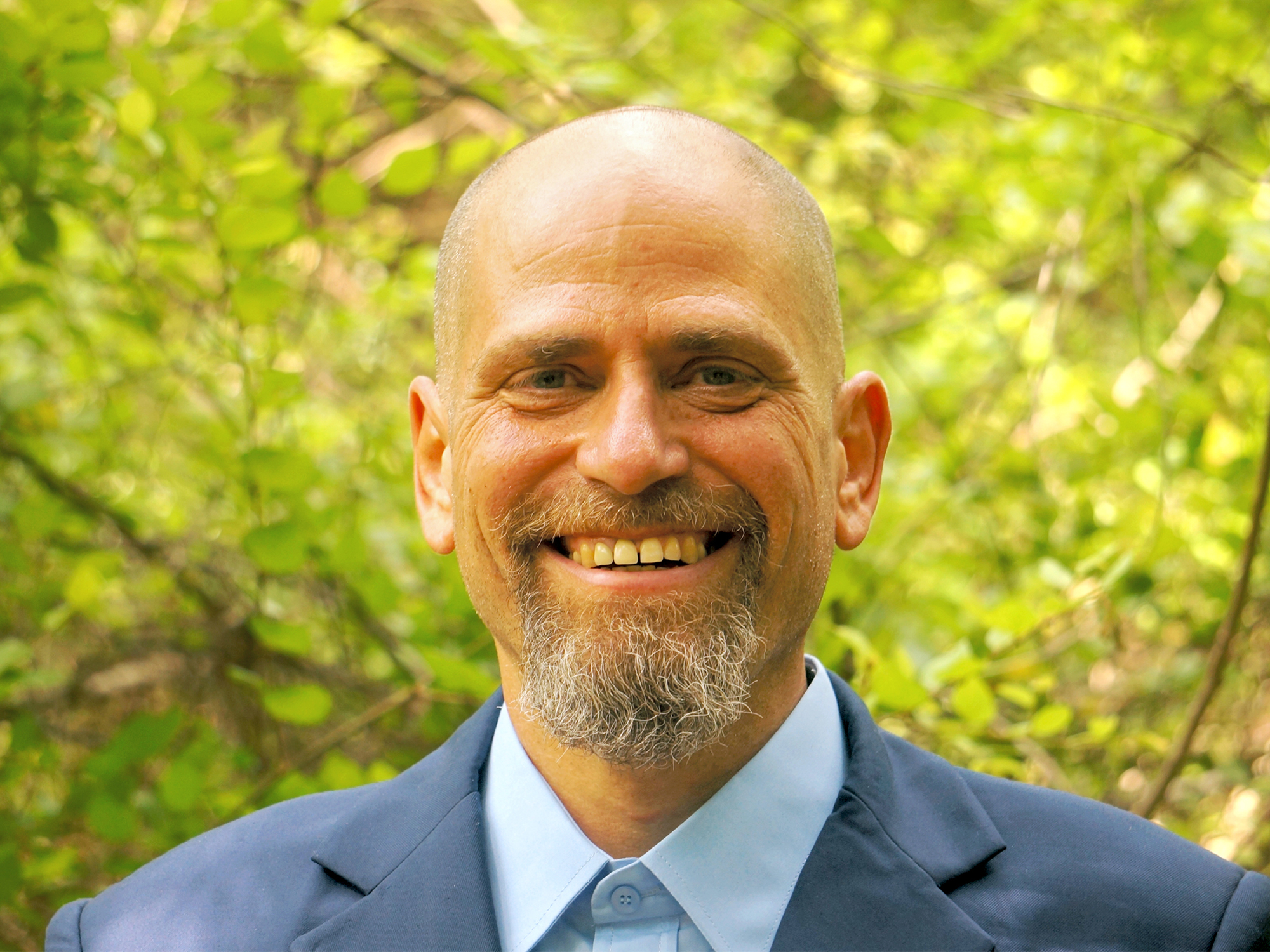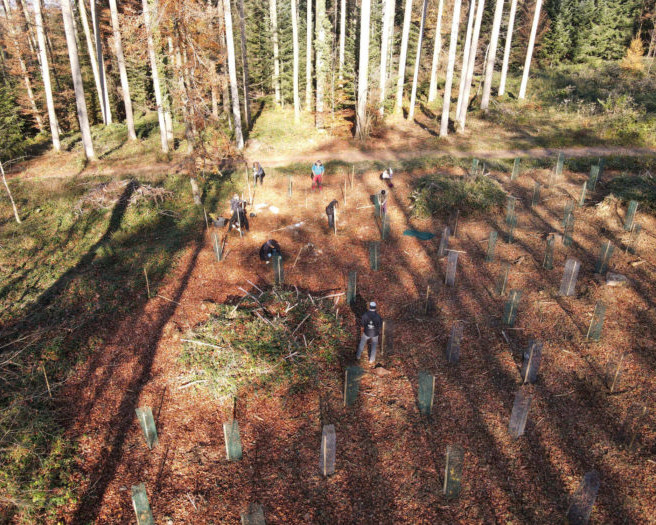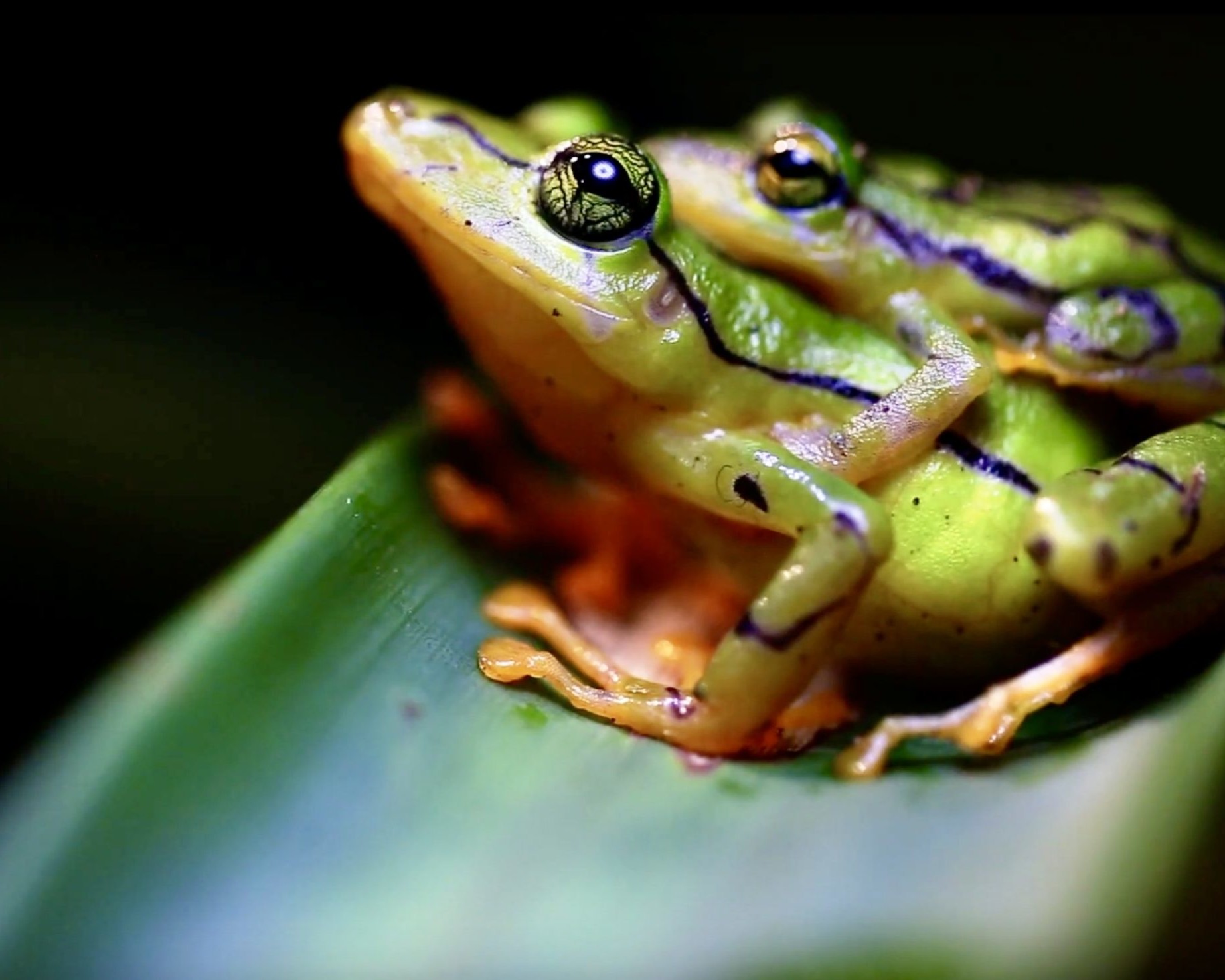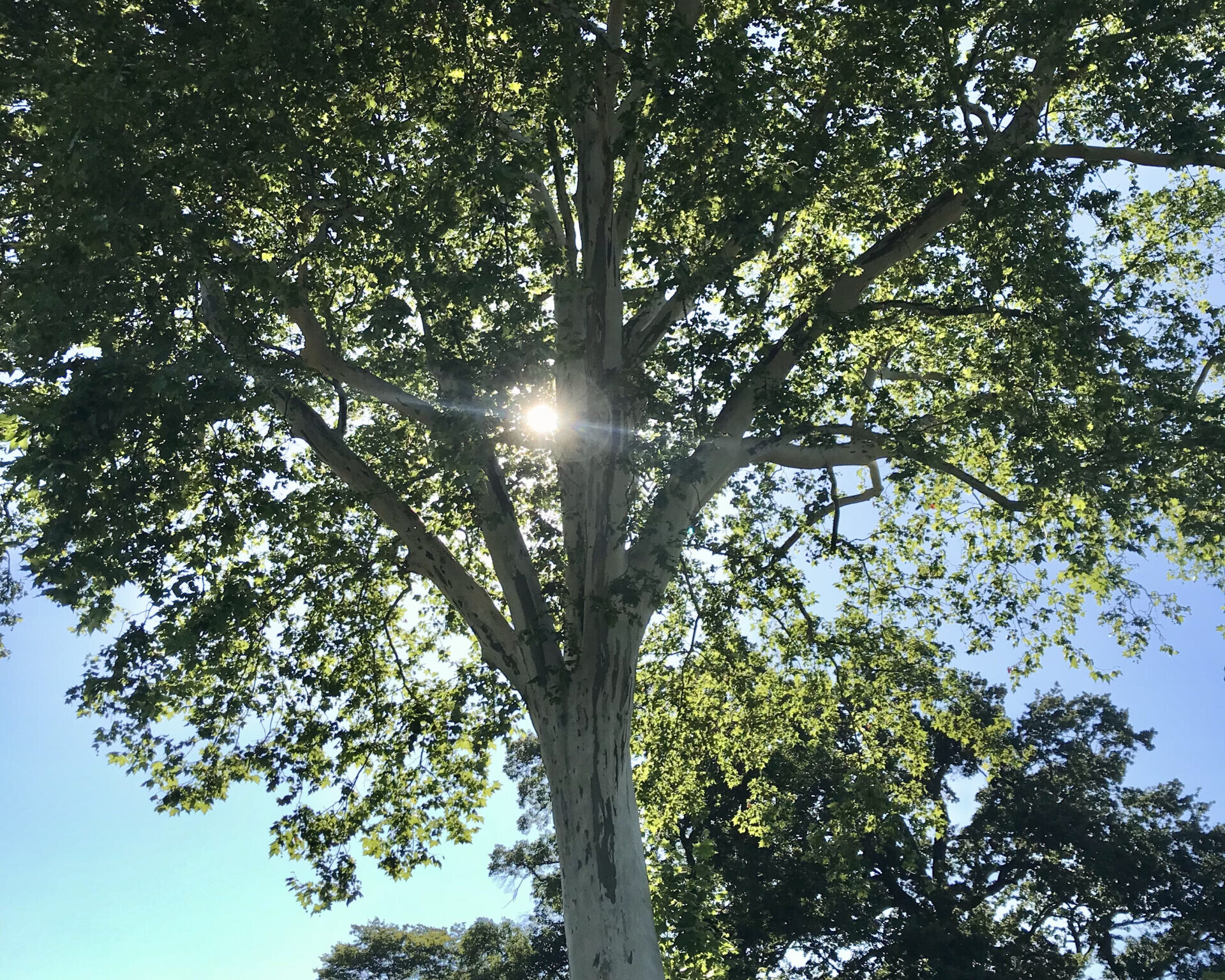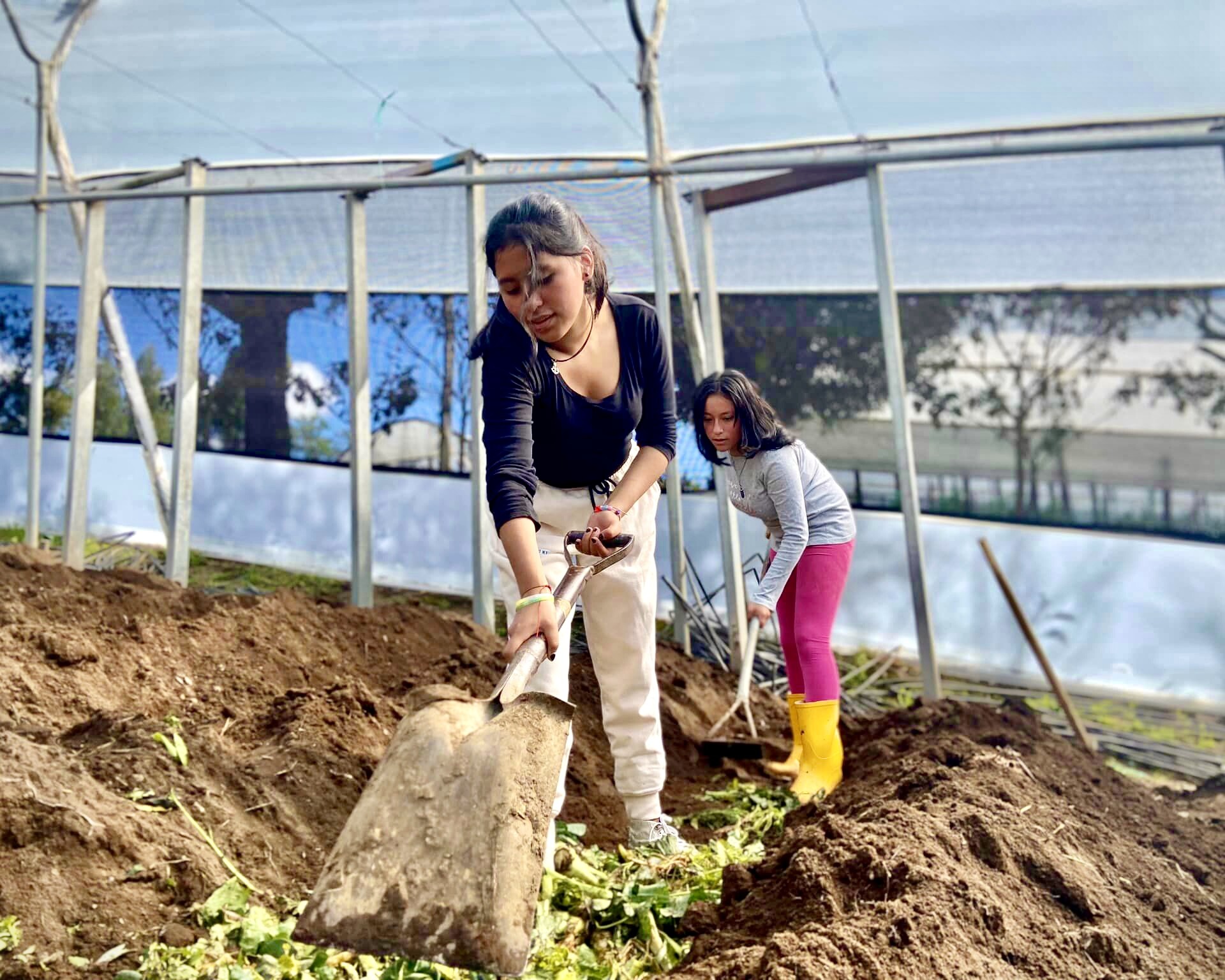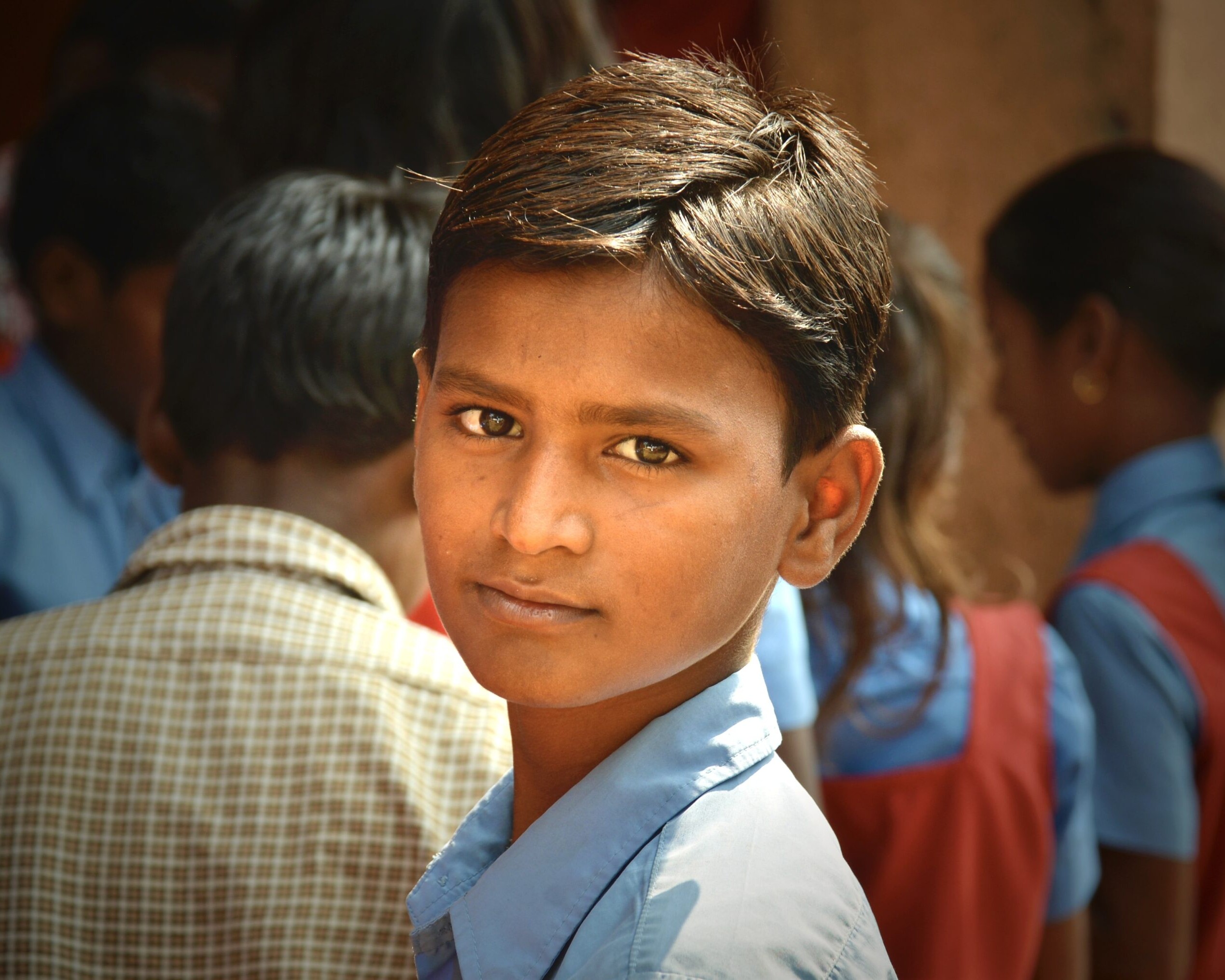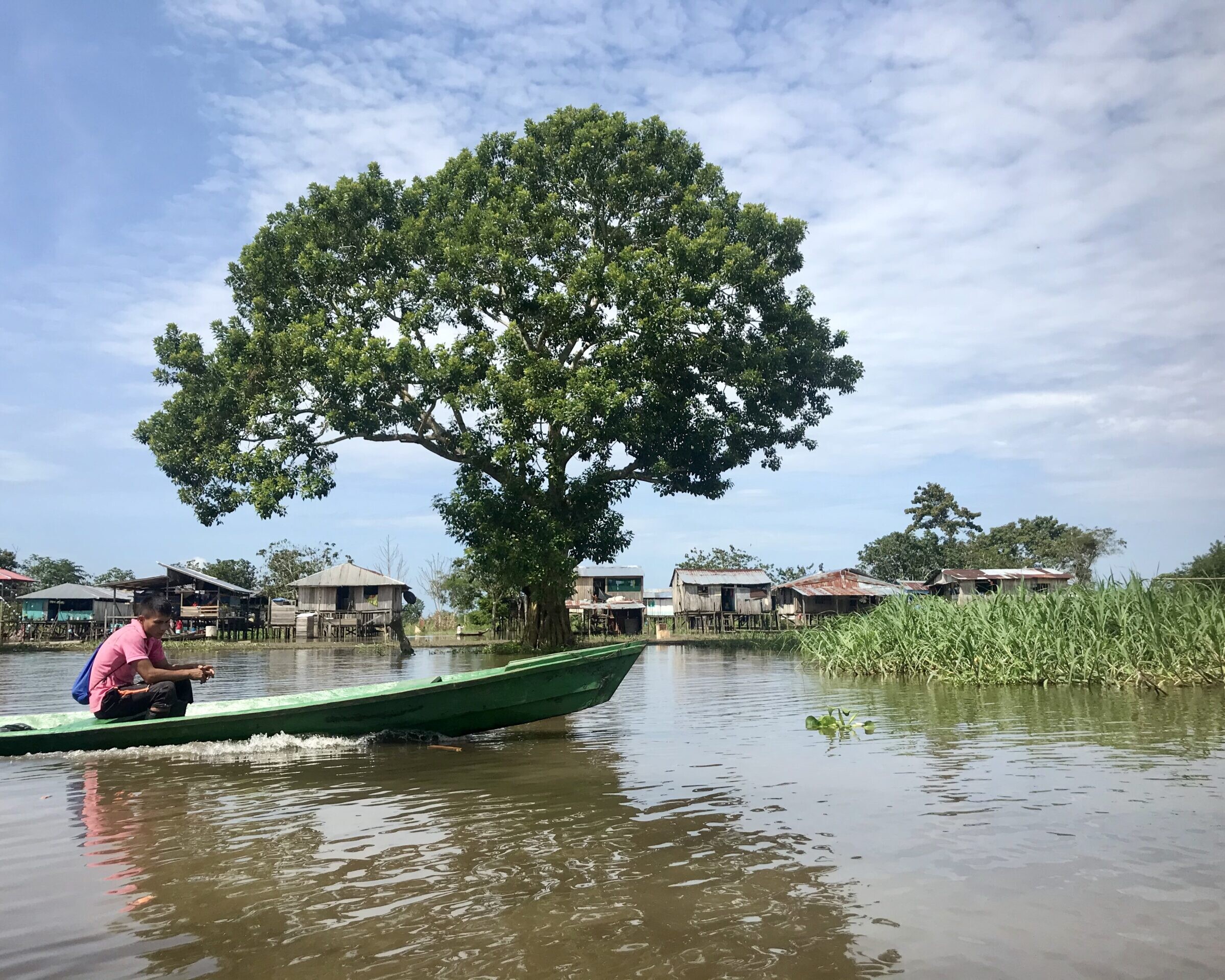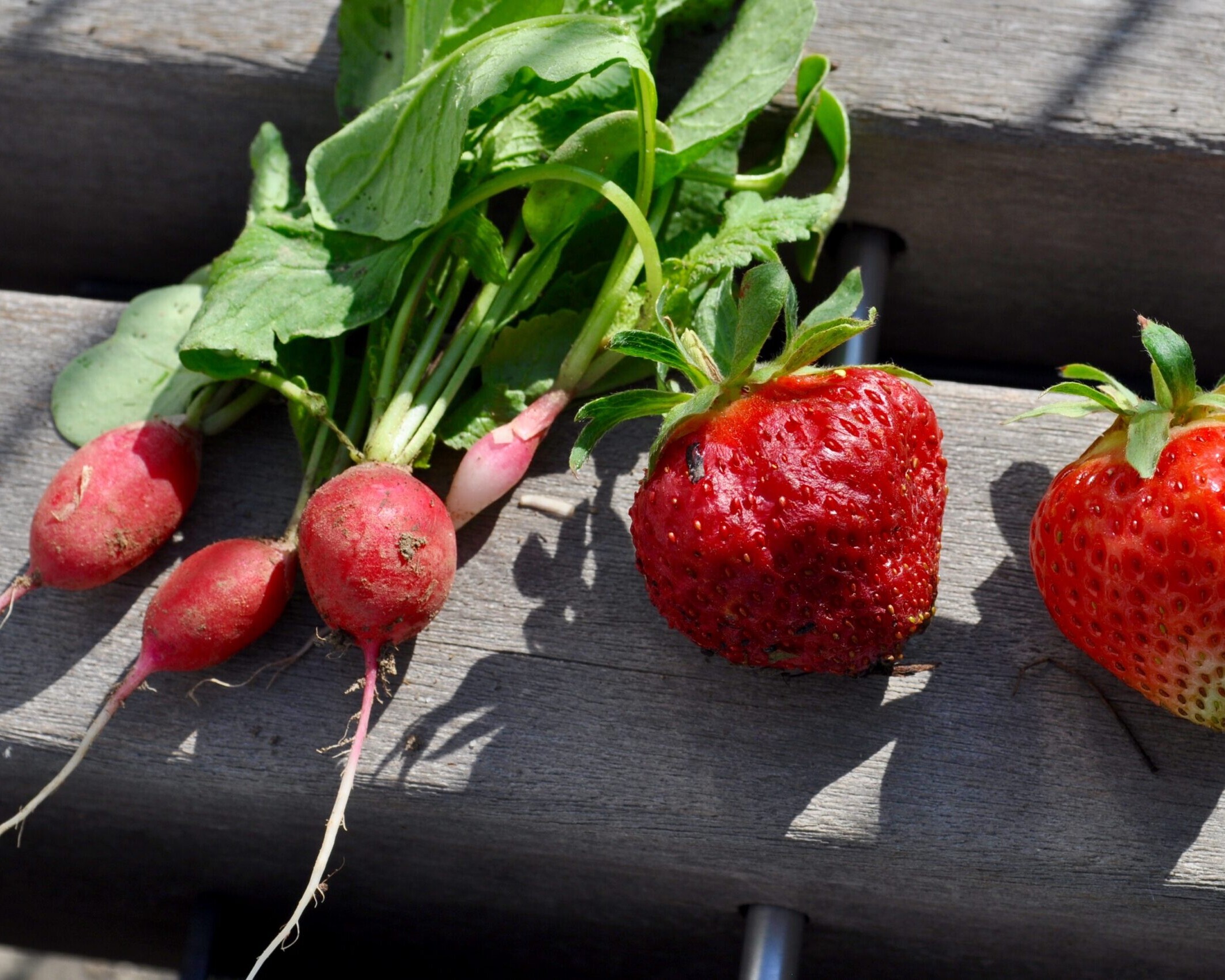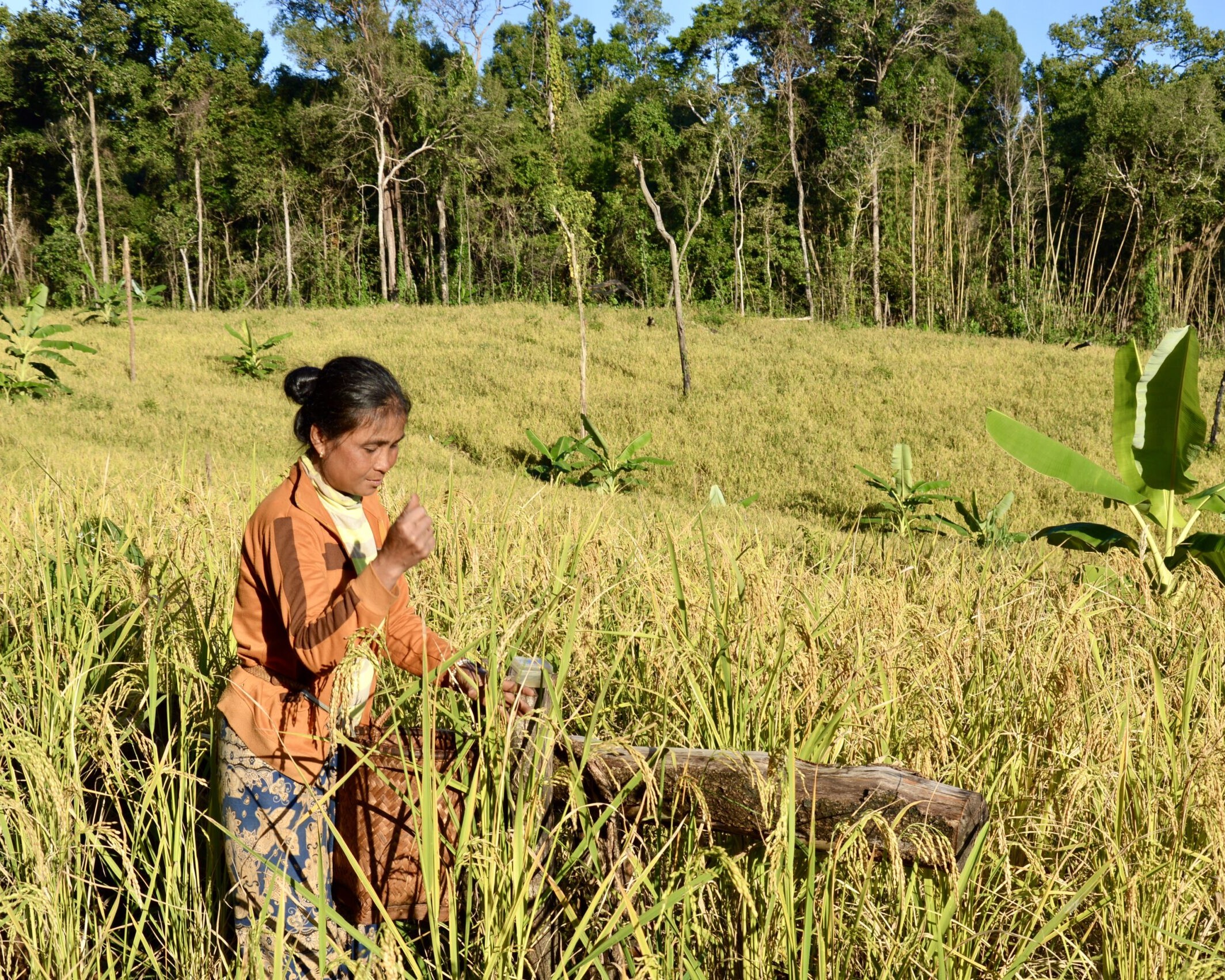Humus & humans
This agroforestry project aims to reverse the process of land degradation and strengthen the resilience of communities in the face of climate change, using the extraordinary potential of oxalogenic species.
Location
Topics
Beneficiaries
Direct
24,000 people receive direct training over 3 years.
Indirect
100,000 people benefit from the trees planted and the training provided.
Impact
100,000 trees planted over 3 years
174,000 tonnes of CO2 sequestered in 50 years
66 villages and communities impacted in 3 years
-90% of food shortage days
+20% in the amount of stored rainwater
Context
- 10 million hectares of forest (more than the size of Portugal) disappear from the earth every year.
- 33% of the world’s soil is degraded.
- Natural carbon sinks (forests, oceans and soils), in their current state, only absorb 54% of annual carbon emissions.
- More than 30% of the world’s population is experiencing severe water shortages due to climate change.
- 10% of the world’s population, 15% of whom own infertile land, suffer from hunger.
- In the most affected areas, people are abandoning their land and migrating to cities.
Our partner
Sadhana Forest is an NGO whose mission is to introduce more people to a more sustainable way of life and to improve food security in drylands through the restoration of infertile land and the management of water resources. Sadhana Forest has been working in India since 2002 and in Kenya since 2014, where it is dedicated to creating food forests that are rich in biodiversity and highly nutritious.
Sadhana’s agroforestry model, which focuses on individual training and community participation, as well as accessible and efficient irrigation and water conservation techniques, has been widely proven: the survival rate of planted trees is close to 90% (compared to an average estimated locally of 40% for other projects in the same regions). For its action, Sadhana Forest won third place in the Humanitarian Water and Food Award in Denmark in 2010.
The project
The Humus and humans project aims to implement and disseminate an innovative agroforestry model that is particularly effective in terms of CO2 sequestration and water conservation, while at the same time extending the accessibility of proven planting techniques to communities living in dry and low-fertility lands. The project is being implemented in two regions with different soil quality and climates, but both affected by drought and food insecurity: Tamil Nadu in India and Samburu and Kajiado counties in Kenya.
For three years, Sadhana Forest teams and their mobile tree-planting units travel to each region to provide local communities with trees and training in planting and water conservation methods that will eventually allow them to cultivate previously infertile land and increase their food security through soil regeneration. The model incorporates the latest scientific research into the choice of species to be planted. These species, whether native or subspontaneous, are chosen not only for their drought resistance or productivity of edible fruits, nuts or leaves, but also for their ability to contribute to soil regeneration. In this respect, preference is given to “oxalogenic” species, capable of biominerally sequestering CO2 in the soil in the form of limestone (via oxalate-carbonate transformation), thus maximising soil regeneration and water percolation.
The project in figures
100000
Trees planted in 3 years
66
Villages impacted in 3 years
+20%
Rainwater stored in 7 years
174000t
CO2 sequestered in 50 years
+70
Animal species in 10 years
-90%
Food shortage days in 7 years
Expected outcomes
- Two mobile tree-planting units are set up and offer theoretical and practical training in 66 villages to over 24,000 people.
- Beneficiaries are given the tools and know-how to plant and maintain food-producing trees using sustainable agroforestry and water conservation techniques.
- Malnutrition is reduced through the production of highly nutritious fruits, nuts and leaves, as well as regenerated soils that allow the development of other crops.
- In the target areas, soils are regenerated, water supply is improved and carbon sequestration is increased, reversing the vicious cycle of soil degradation
- After 3 years, each tree planted will have sequestered approximately 7.38 kg of CO2.
- In the long term, i.e. over 50 years, each tree will have sequestered about 1,745 kg of CO2.
Sustainability
- Once trained, the beneficiaries are given the tools to improve their environment independently in the long term.
- The tree planting model is sustainable, with a particularly high survival and growth rate of trees (90%).
- The water retention methods have a multiplier effect: for every tree planted in an area with sufficient water, an average of three new trees grow spontaneously.
- In the long term, ecosystems in these areas are gradually restored through the multiplication of vegetation and the increase in biodiversity.
- The methods are shared for replication in areas at high risk of aridity and malnutrition.
- The scientific results are disseminated and made available to the public.
"When humans realize how much they depend on trees, they have done the most important step towards health and happiness."
— Aviram Rozin, Director of Sadhana Forest
Our projects
Together with its partners, OneAction develops initiatives to protect nature and empower communities. These initiatives are designed to be holistic, sustainable and locally owned. In most cases, self-financing mechanisms are included in order to create models that can be replicated in different contexts.
Tree planting in Switzerland
OneAction works to conserve the Western Andean Forest in the Intag Valley, one of the ten most biodiverse regions in the world.
From the source to the forest
OneAction works to conserve the Western Andean Forest in the Intag Valley, one of the ten most biodiverse regions in the world.
Reunited under the canopy
OneAction creates public-private partnerships in Geneva and the Lake Geneva region to increase vegetation cover in urban areas.
The wings of knowledge
In Quito, OneAction is working with the INEPE to spread its internationally recognised holistic education model, while generating new sources of self-financing.
A future of possibilities
In Bihar, OneAction promotes access to quality education for children from the most disadvantaged backgrounds.
Tree planting in Switzerland
OneAction works to conserve the Western Andean Forest in the Intag Valley, one of the ten most biodiverse regions in the world.
From the source to the forest
OneAction works to conserve the Western Andean Forest in the Intag Valley, one of the ten most biodiverse regions in the world.
Reunited under the canopy
OneAction creates public-private partnerships in Geneva and the Lake Geneva region to increase vegetation cover in urban areas.
The wings of knowledge
In Quito, OneAction is working with the INEPE to spread its internationally recognised holistic education model, while generating new sources of self-financing.
A future of possibilities
In Bihar, OneAction promotes access to quality education for children from the most disadvantaged backgrounds.
Tree planting in Switzerland
OneAction works to conserve the Western Andean Forest in the Intag Valley, one of the ten most biodiverse regions in the world.
From the source to the forest
OneAction works to conserve the Western Andean Forest in the Intag Valley, one of the ten most biodiverse regions in the world.
Reunited under the canopy
OneAction creates public-private partnerships in Geneva and the Lake Geneva region to increase vegetation cover in urban areas.
The wings of knowledge
In Quito, OneAction is working with the INEPE to spread its internationally recognised holistic education model, while generating new sources of self-financing.
A future of possibilities
In Bihar, OneAction promotes access to quality education for children from the most disadvantaged backgrounds.
Our projects
Together with its partners, OneAction develops initiatives to protect nature and empower communities. These initiatives are designed to be holistic, sustainable and locally owned. In most cases, self-financing mechanisms are included in order to create models that can be replicated in different contexts.
Tree planting in Switzerland
OneAction works to conserve the Western Andean Forest in the Intag Valley, one of the ten most biodiverse regions in the world.
From the source to the forest
OneAction works to conserve the Western Andean Forest in the Intag Valley, one of the ten most biodiverse regions in the world.
Reunited under the canopy
OneAction creates public-private partnerships in Geneva and the Lake Geneva region to increase vegetation cover in urban areas.
The wings of knowledge
In Quito, OneAction is working with the INEPE to spread its internationally recognised holistic education model, while generating new sources of self-financing.
A future of possibilities
In Bihar, OneAction promotes access to quality education for children from the most disadvantaged backgrounds.
Past projects
Here are some of OneAction’s past projects.
Madera plástica
Inspired by a successful model developed in Medellín, OneAction aims to provide a solution to the accumulation of plastic waste in affected areas by transforming it into a building material.
GreenAction
OneAction developed pedagogical gardens in several schools in French-speaking Switzerland to strengthen the connection between students and nature.
Papa china en Amazonía
OneAction supported the empowerment of Amazonian women through the sustainable production of papa china, a food tuber.
Conservation in Mondulkiri
OneAction developed economic alternatives to deforestation to protect the Seima forest and empower the Bunong minority in Mondulkiri.
Conservation in Mondulkiri
OneAction developed economic alternatives to deforestation to protect the Seima forest and empower the Bunong minority in Mondulkiri.
Papa china en Amazonía
OneAction supported the empowerment of Amazonian women through the sustainable production of papa china, a food tuber.
GreenAction
OneAction developed pedagogical gardens in several schools in French-speaking Switzerland to strengthen the connection between students and nature.
Madera plástica
Inspired by a successful model developed in Medellín, OneAction aims to provide a solution to the accumulation of plastic waste in affected areas by transforming it into a building material.
Conservation in Mondulkiri
OneAction developed economic alternatives to deforestation to protect the Seima forest and empower the Bunong minority in Mondulkiri.
Papa china en Amazonía
OneAction supported the empowerment of Amazonian women through the sustainable production of papa china, a food tuber.
GreenAction
OneAction developed pedagogical gardens in several schools in French-speaking Switzerland to strengthen the connection between students and nature.
Madera plástica
Inspired by a successful model developed in Medellín, OneAction aims to provide a solution to the accumulation of plastic waste in affected areas by transforming it into a building material.
Past projects
Here are some of OneAction’s past projects.
Madera plástica
Inspired by a successful model developed in Medellín, OneAction aims to provide a solution to the accumulation of plastic waste in affected areas by transforming it into a building material.
GreenAction
OneAction developed pedagogical gardens in several schools in French-speaking Switzerland to strengthen the connection between students and nature.
Papa china en Amazonía
OneAction supported the empowerment of Amazonian women through the sustainable production of papa china, a food tuber.
Conservation in Mondulkiri
OneAction developed economic alternatives to deforestation to protect the Seima forest and empower the Bunong minority in Mondulkiri.
Conservation in Mondulkiri
OneAction developed economic alternatives to deforestation to protect the Seima forest and empower the Bunong minority in Mondulkiri.
Papa china en Amazonía
OneAction supported the empowerment of Amazonian women through the sustainable production of papa china, a food tuber.
GreenAction
OneAction developed pedagogical gardens in several schools in French-speaking Switzerland to strengthen the connection between students and nature.
Madera plástica
Inspired by a successful model developed in Medellín, OneAction aims to provide a solution to the accumulation of plastic waste in affected areas by transforming it into a building material.
Conservation in Mondulkiri
OneAction developed economic alternatives to deforestation to protect the Seima forest and empower the Bunong minority in Mondulkiri.
Papa china en Amazonía
OneAction supported the empowerment of Amazonian women through the sustainable production of papa china, a food tuber.
GreenAction
OneAction developed pedagogical gardens in several schools in French-speaking Switzerland to strengthen the connection between students and nature.
Madera plástica
Inspired by a successful model developed in Medellín, OneAction aims to provide a solution to the accumulation of plastic waste in affected areas by transforming it into a building material.



